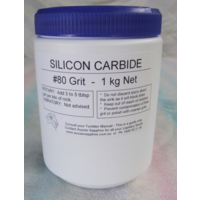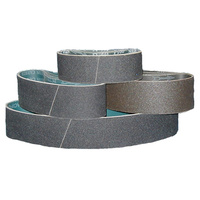Black spinel is not well-known among the gem world, yet its outstanding features make it the ideal choice for an opaque black gem. These days, where many gems undergo routine enhancement treatments, black spinel can stand proud as a gem requiring nothing more than cutting and polishing to bring out its inner beauty. If you want a totally natural and untreated black gemstone - black spinel is the one!
- See our range of Calibrated Black Spinel Gems (coming soon)
- See our range of Gold/Silver Black Spinel Jewellery (coming soon)
- Properties of Black Spinel
- Alternatives in Black
- Mythology & Symbolism of Black Gemstones
- Sources and Links of Interest
Properties of Black Spinel
Black Spinel or “Pleonast” is not widely known but has been mined and used in Thailand for centuries where it is called “Nin”. Black Spinel has the mineral composition of MgAl2O4. Similar mineral composition to corundum (Al2O3) means that it is often found in ruby/sapphire bearing areas. Miners here often call it Black Jack and regard it as an indicator of good sapphire being present in the wash. Spinel comes in a variety of colours but the relatively rare opaque black variety is only found in a few areas - traditionally Thailand is the main source but Australia is also a important producer.
Known by various names including Pleonast, Ceylonite or Nin, black spinel is also sometimes sold under misleading names such as "Black Sapphire", "Black Onyx", etc. However, there is no need to pretend it is something else as there is nothing more elegant than the striking contrast of this jet black gemstone set in a quality piece of silver or gold jewellery. Black Spinel can stand on its own as a unique and beautiful gemstone. With a hardness of 8.0, only black diamond or sapphire is harder but both are more expensive and not readily available in a range of sizes. Good hardness, high reflectance and lack of cleavage make Black Spinel ideal for everyday wear in jewellery. This gem combines durability with beauty. Black spinel is not treated in any way - simple cutting and polishing is enough to bring out its natural beauty.
We still have good stock of black spinel gems and jewellery from our mining days and will be listing more of this soon.
Alternatives in Black
| Black Diamond | Black Diamond has become extremely popular in recent years but buyers should be aware that almost all black diamond now sold has been treated with radiation to produce the dark colour (actually a very dark green). Fully natural black diamonds do exist but the opaque black colour is caused by numerous inclusions (graphite, magnetite, hematite) in the stone - these inclusions can weaken the diamond making it fracture easily. These natural black diamonds are very difficult to cut and polish, are extremely expensive, and are usually only seen in very small sizes. If you are looking for a glossy black gem, we do not recommend diamond |
| Black Onyx | More widely known but inferior for use in jewellery. With a hardness of only 6.5-7.0, onyx is more susceptible to damage. Buyers must assume that all commercially available black onyx has been heated and dyed to achieve the black colour as naturally occurring onyx ranges from white to brown, often with striping. Black onyx is often very cheap but the colour is not natural and in our experience, the quality of polish is often not quite as good as black spinel |
| Black Tourmaline | With a hardness of 7.0-7.5, black tourmaline or schorl is also susceptible to damage. Black tourmaline is not usually treated but is relatively common and rarely used. The crystalline structure of tourmaline may influence what shapes and sizes may be cut from this gem - we find that our black spinel is usually very consistent and cuts without problem in whatever shape and size the rough indicates |
| Hematite | Colour is more grey than pure black. Hardness is only 5.5-6.5 so is very soft for use in jewellery and subject to damage from frequent wear. Common and cheap - often used as beads. The magnetic quality of hematite does add some interest but it is far less suitable for traditional jewellery designs |
| Jet | Jet is a form of hard coal which has been used as jewellery for centuries. Due to its softness (3.0-4.0), it could be carved and shaped easily. However, this means it is much less durable than a gemstone of mineral origin. Jet will feel warmer on the skin and due to its softness, often does not polish to quite as high a gloss finish as some of the harder alternatives. Jet was very popular in Victorian times when Queen Victoria wore it as mourning jewellery after the death of Prince Albert |
Mythology and Symbolism
There is a wealth of mythology surrounding black spinel. It is believed to protect its owner from harm, to reconcile differences, and to console sadness. Some say that black spinel is the stone for people born on Saturday and it is the recommended gift for the 22nd wedding anniversary. Spinel (including black) was also recently added as an alternative birthstone for August (along with peridot and sardonyx).
While in Western culture, black may be associated with evil or mourning; in other cultures, black may represent power, fertility or wisdom (source: Wikipedia). In any case, black is the essence of style and sophistication with a timeless quality that means it will never go out of fashion.
Sources & Links of Interest
- Black Gemstones - International Gem Society
- Spinel in Australia - Mindat







